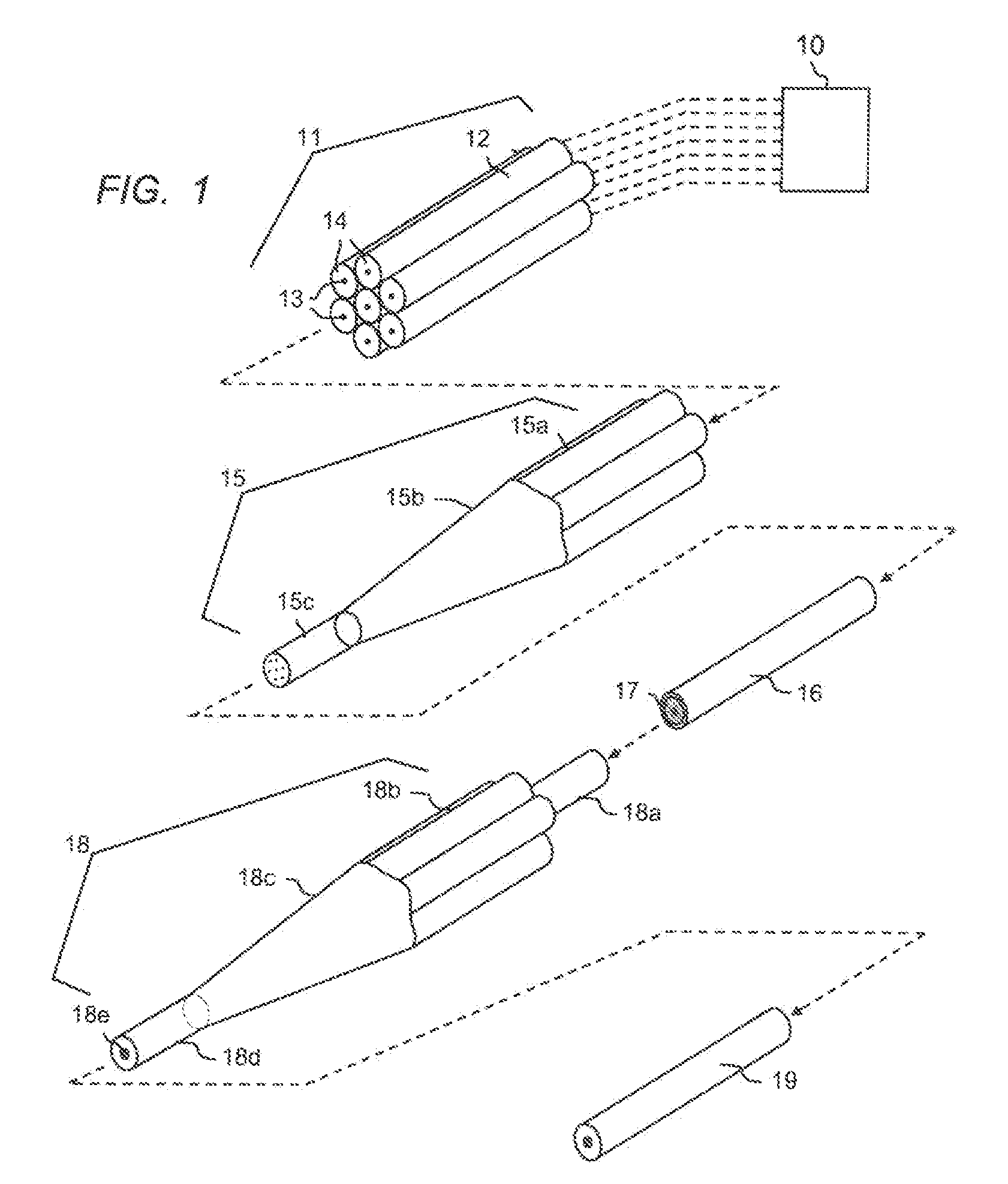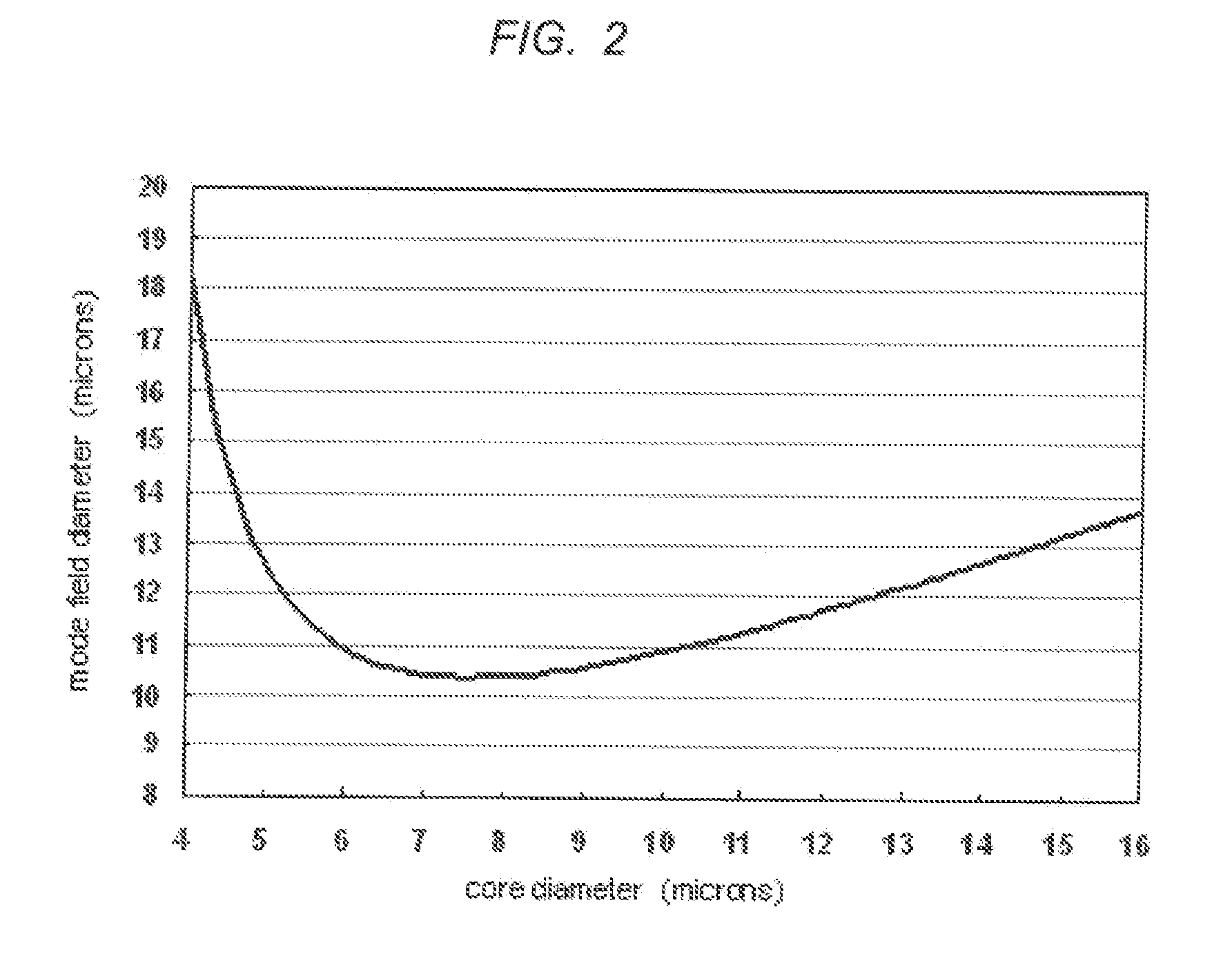Fiber Based Laser Combiners
a fiber-based laser and combiner technology, applied in the field of fiber-based laser combiners, can solve the problems of high power of moving mechanical systems, prohibitive cost and maintenance problems, and low packing density of the cores in the bundle, and achieve the effect of high optical density
- Summary
- Abstract
- Description
- Claims
- Application Information
AI Technical Summary
Benefits of technology
Problems solved by technology
Method used
Image
Examples
Embodiment Construction
[0020]Referring to FIG. 1, an array of lasers is shown at 10. In the illustration shown here, as an example, seven lasers are shown and the laser combiner is designed to combine the outputs from these seven lasers into a single high power source. As this embodiment is but one example of the scope of this invention, the number of laser sources being combined may vary widely. A laser combiner according to the invention will combine at least two laser outputs using at least two tapered fibers. More preferably, the number of sources or fibers is between 5-30. As one objective of the present invention is to produce a high power source, the lasers 10 are typically high power lasers. In an all-fiber implementation, the lasers 10 can be rare earth doped optical gain fibers, for example, Ytterbium doped gain fibers. However, any suitable array of laser sources may be used. Referring again to FIG. 1, the lasers 10 are shown schematically coupled to an array 11 of delivery fibers 12. Each fibe...
PUM
 Login to View More
Login to View More Abstract
Description
Claims
Application Information
 Login to View More
Login to View More - R&D
- Intellectual Property
- Life Sciences
- Materials
- Tech Scout
- Unparalleled Data Quality
- Higher Quality Content
- 60% Fewer Hallucinations
Browse by: Latest US Patents, China's latest patents, Technical Efficacy Thesaurus, Application Domain, Technology Topic, Popular Technical Reports.
© 2025 PatSnap. All rights reserved.Legal|Privacy policy|Modern Slavery Act Transparency Statement|Sitemap|About US| Contact US: help@patsnap.com



